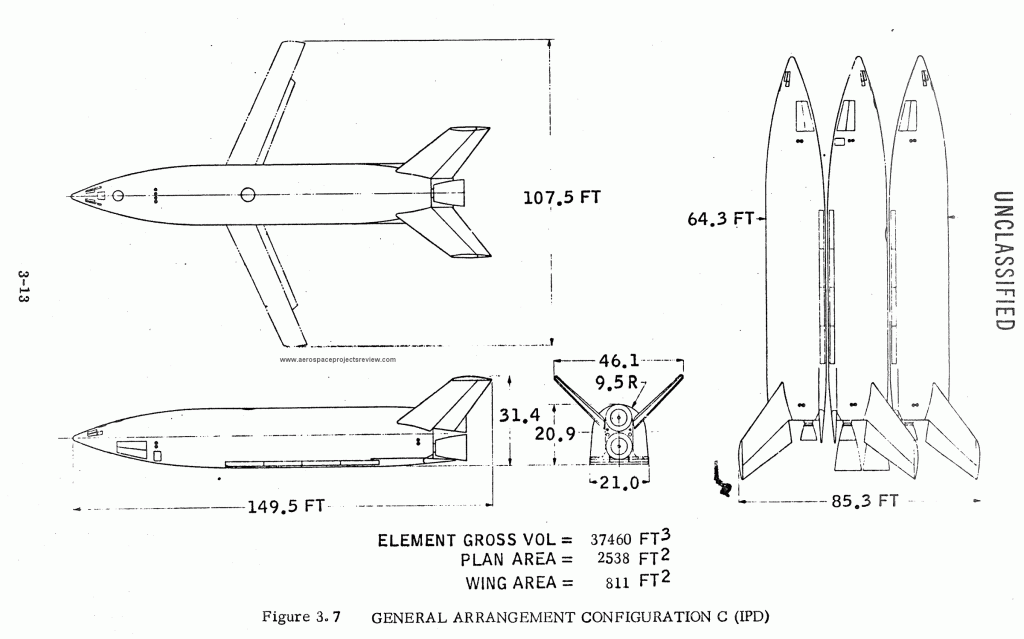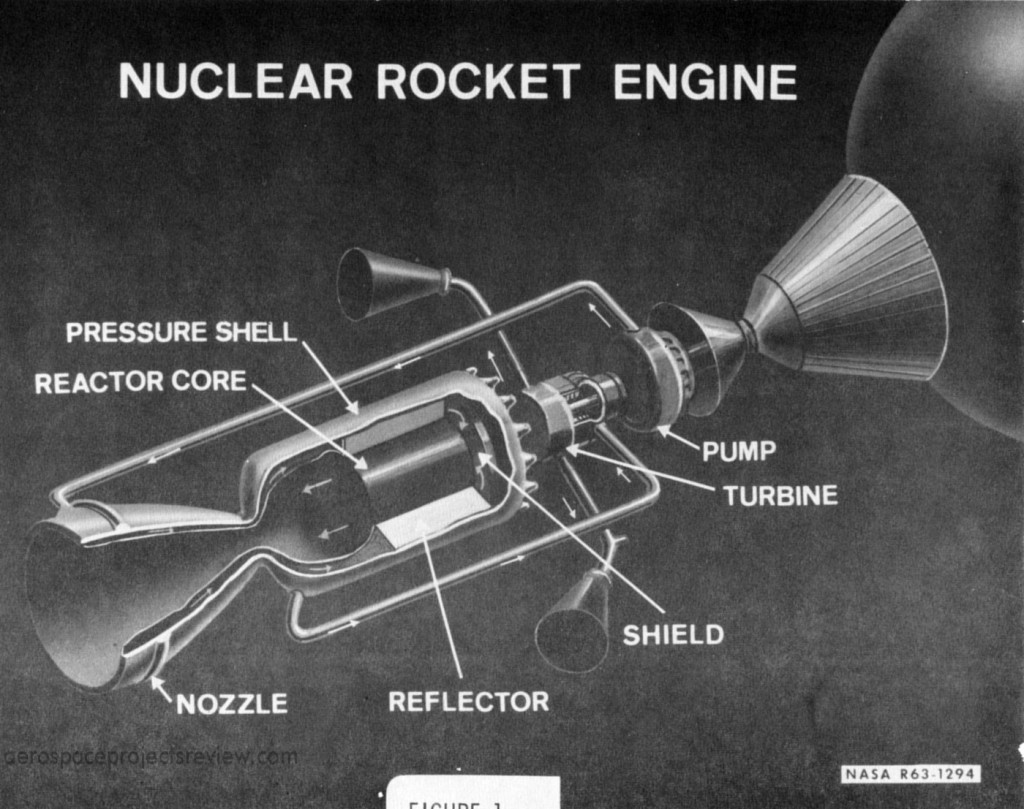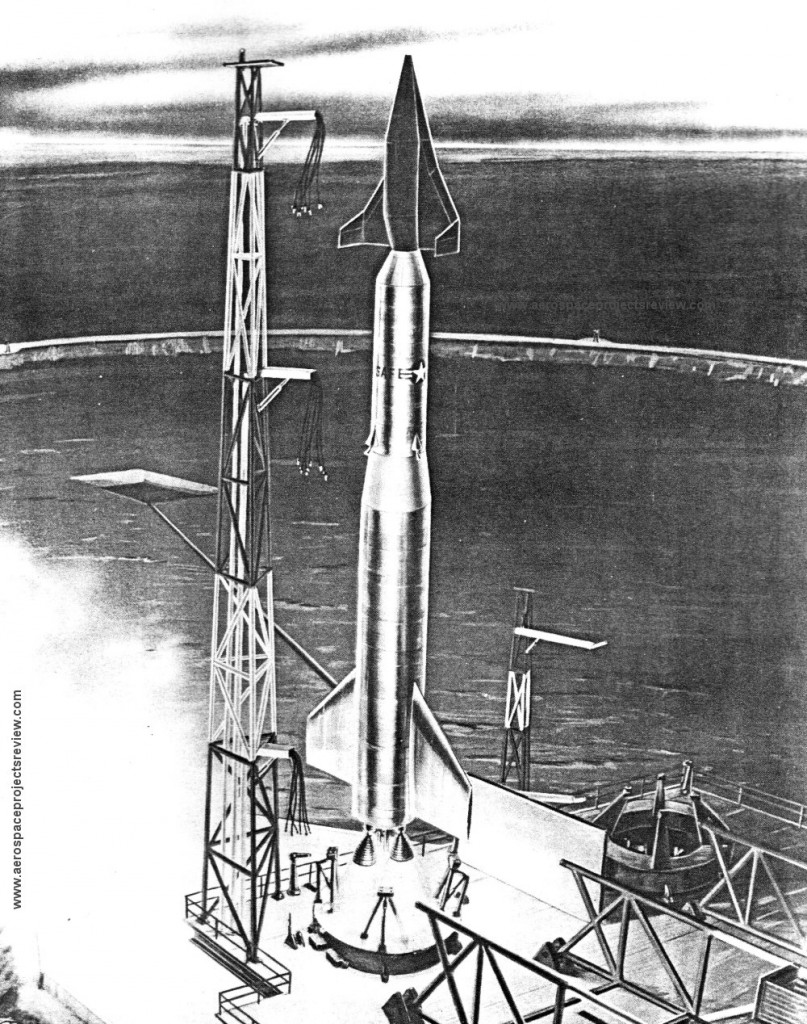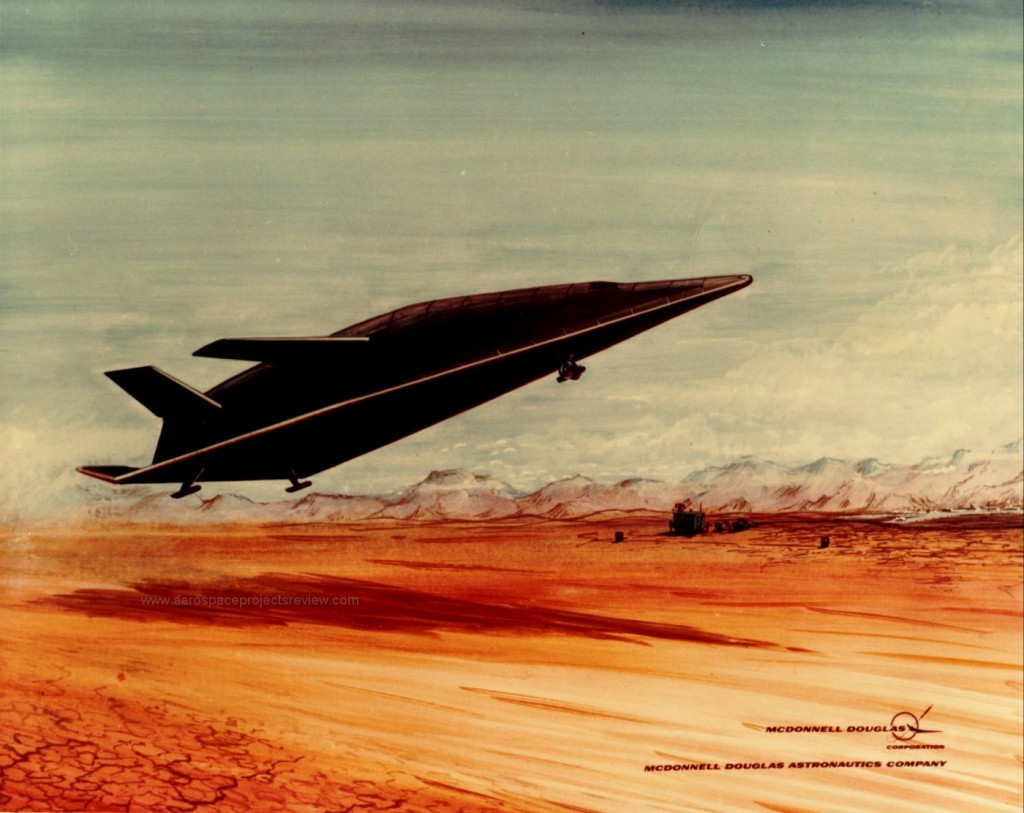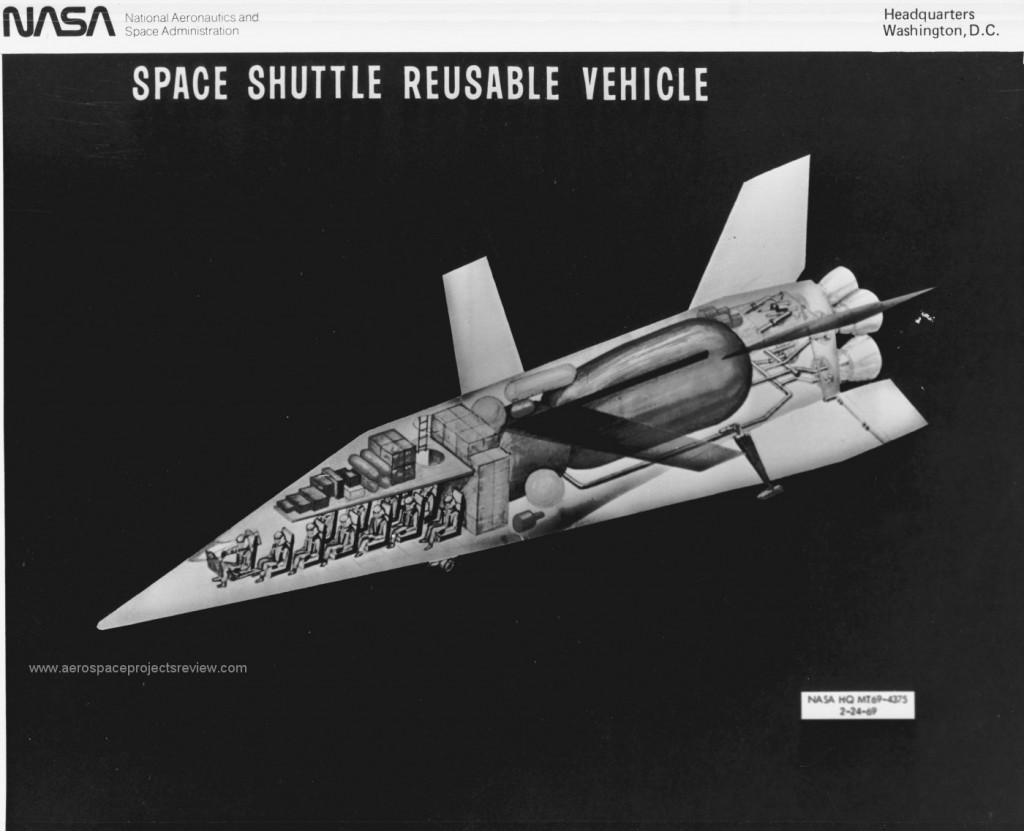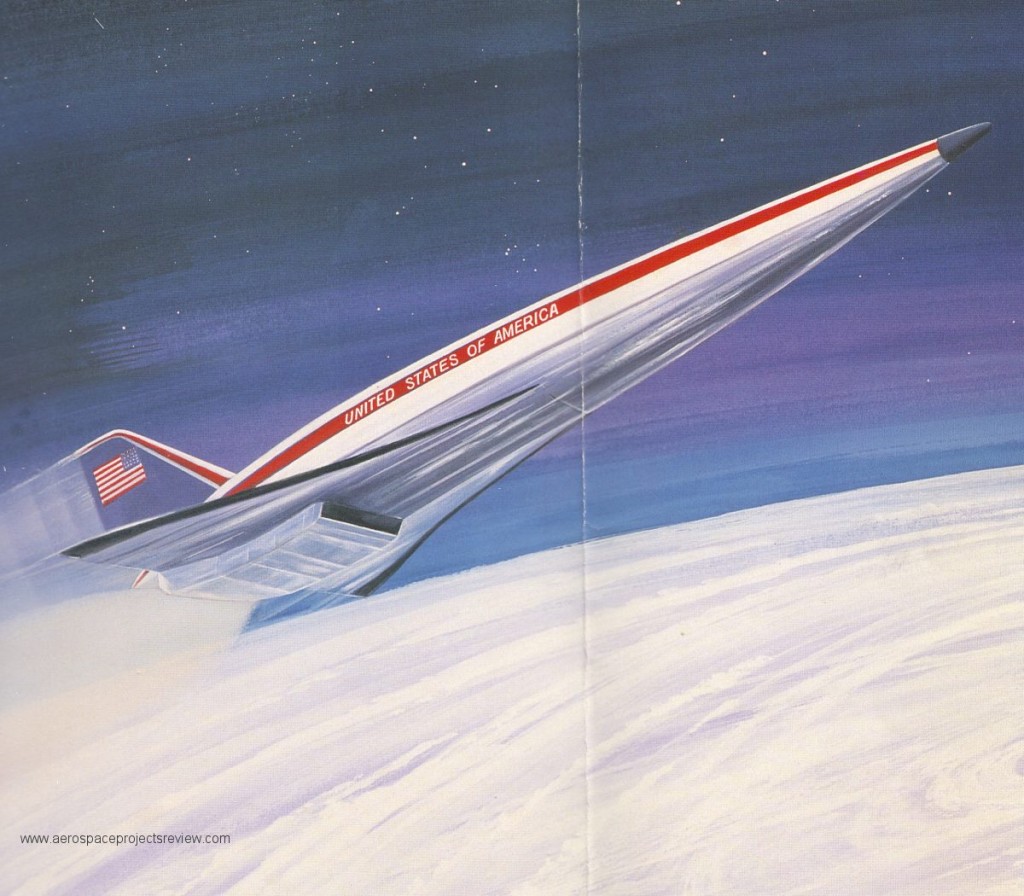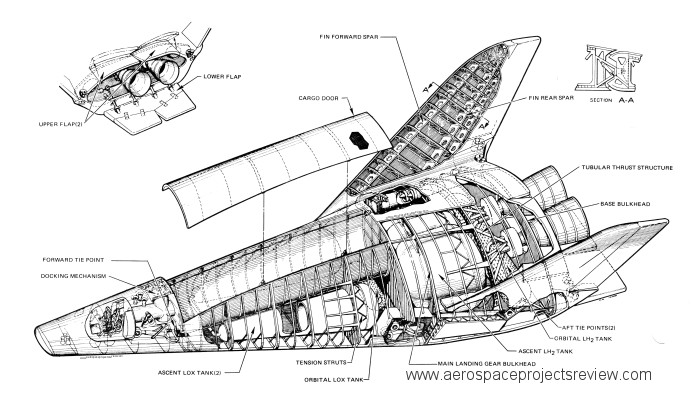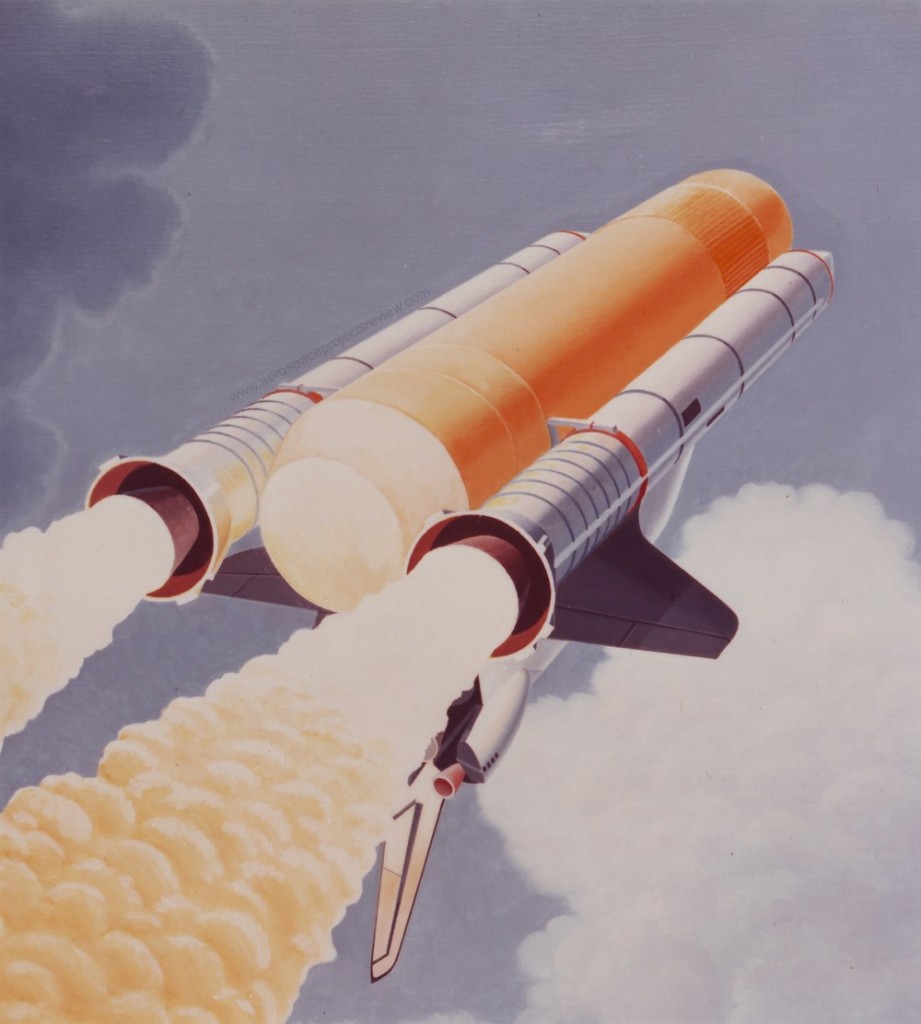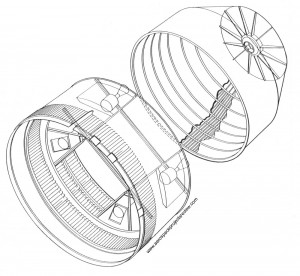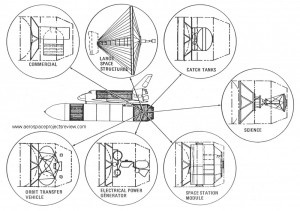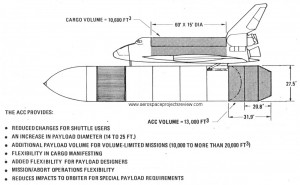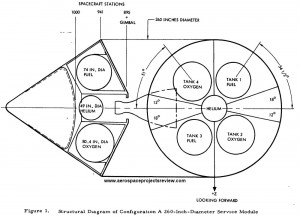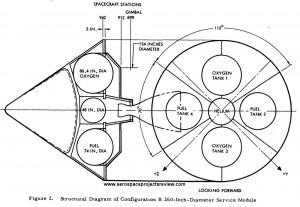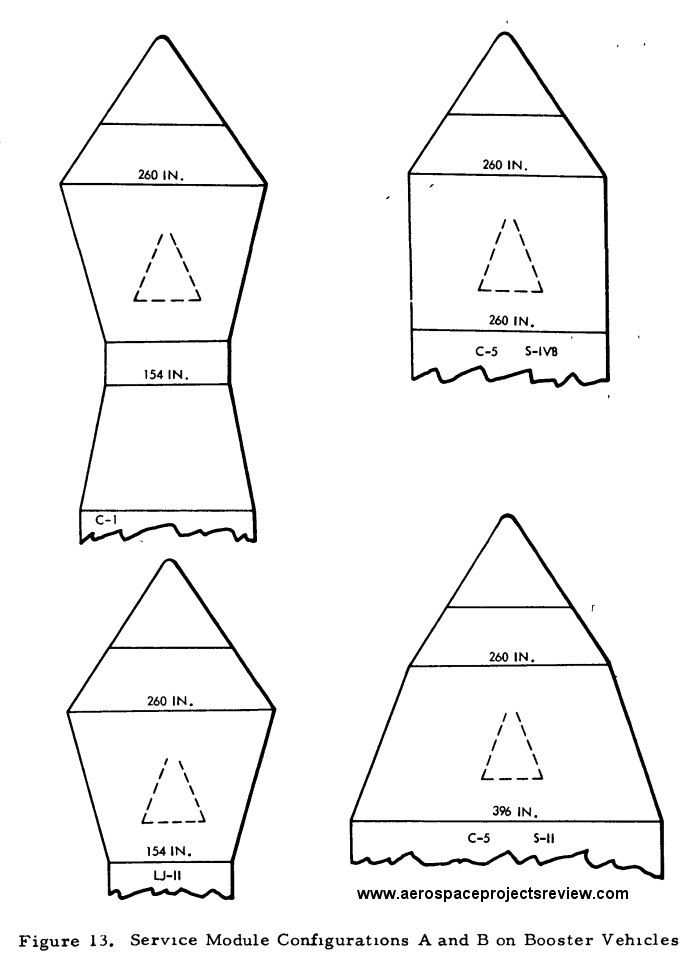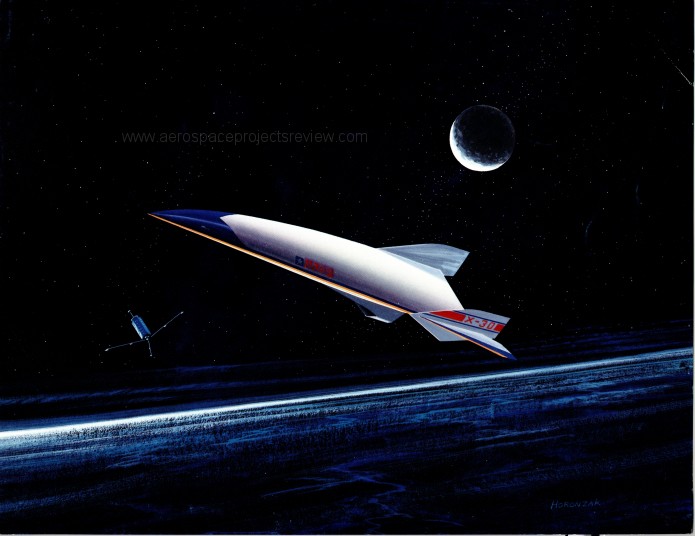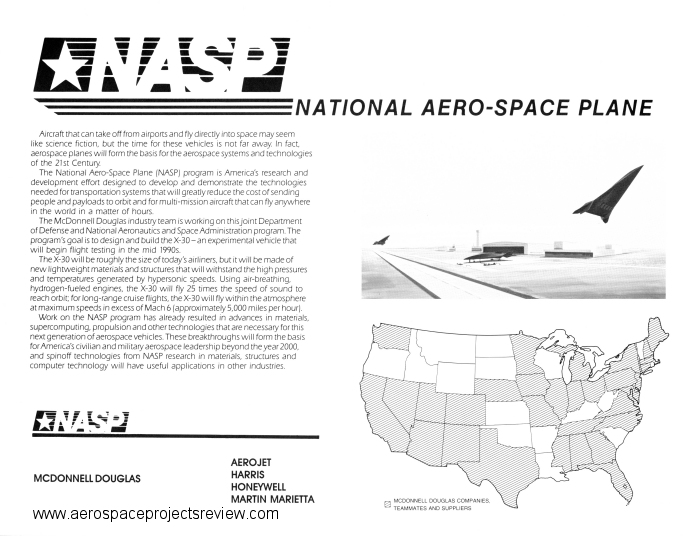A 1969 Convair concept for a space shuttle. The Triamese used three vehicles that shared outer mold lines and many components… two as boosters, a third as the orbiter. The orbiter would have more complex rocket engines, featuring extendable nozzles for improved high altitude performance. All three included cockpits, relatively small high aspect ratio wings that would be stowed internally and flip out for landing, and flip-out turbofans for re-entry cruise and go-around capability. Numerous variants were studied including biamese versions using dissimilar boosters and orbiters.
